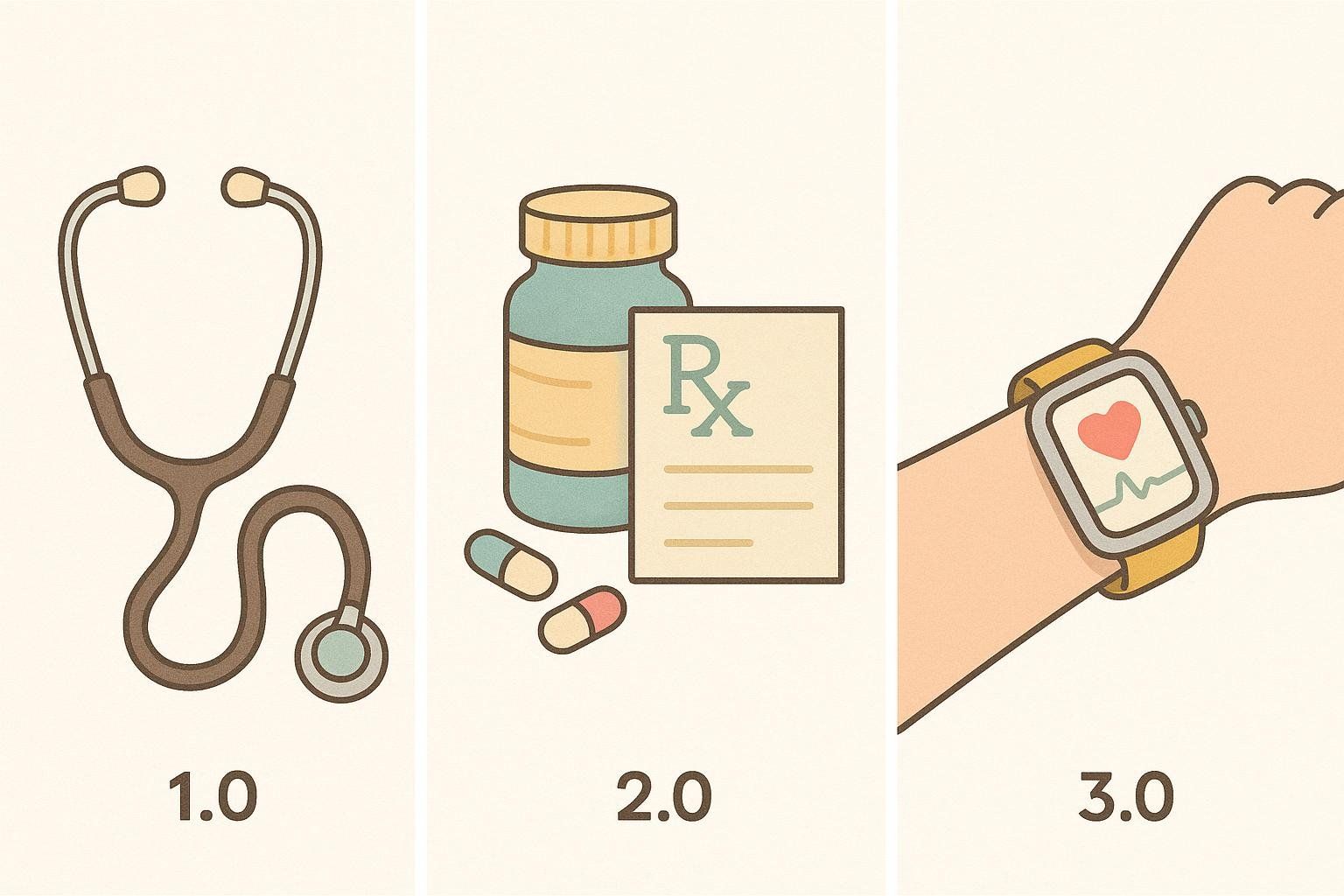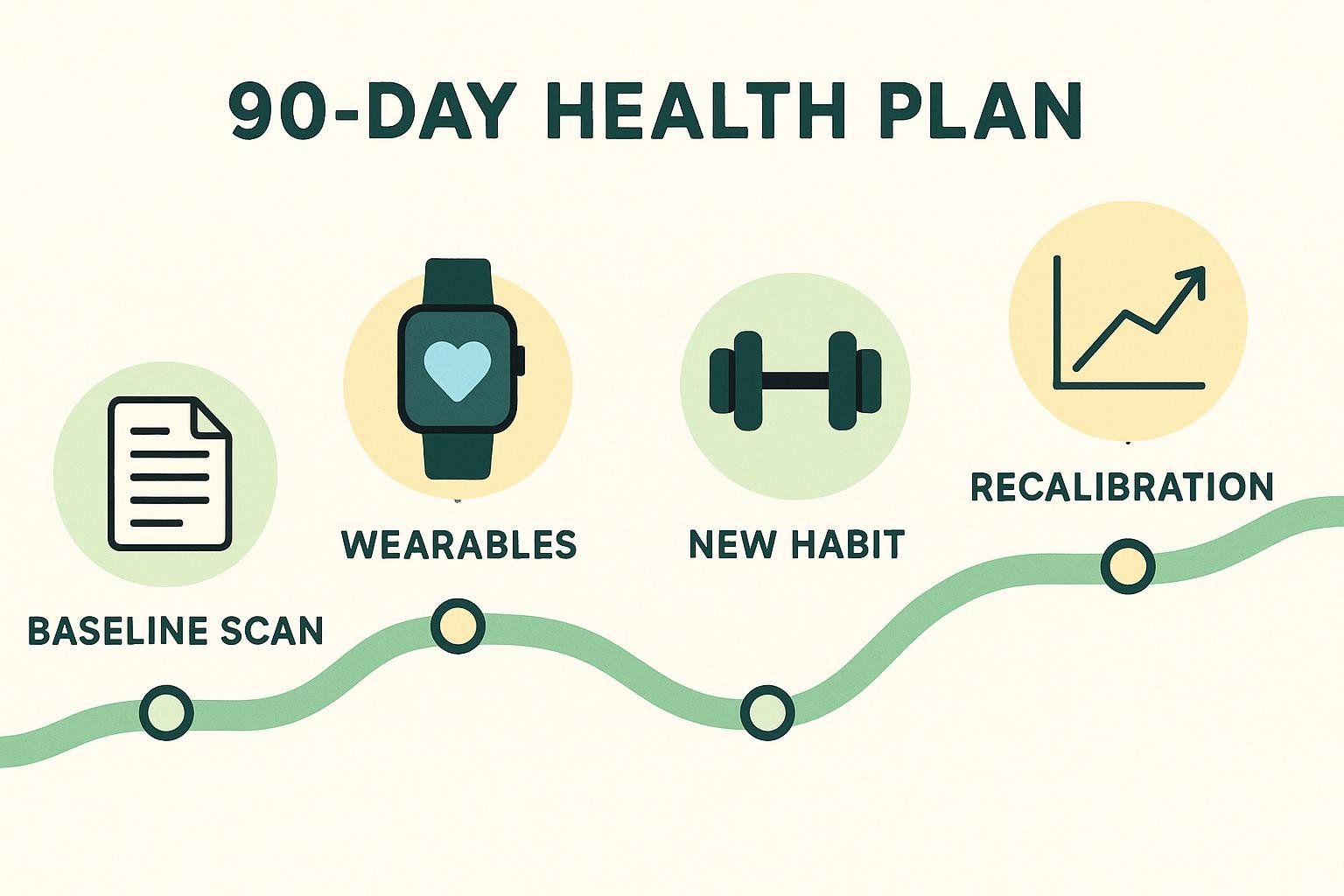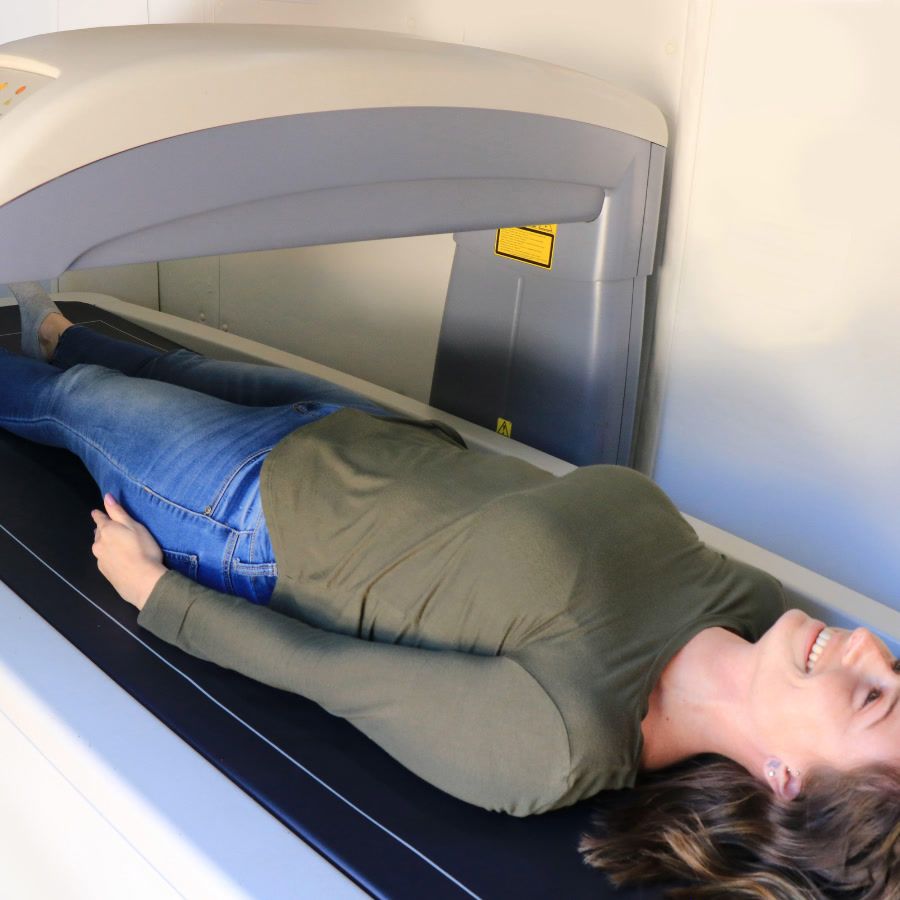Medicine 3.0: A Guide to Personalized Healthcare

Medicine 3.0: A Guide to Personalized Healthcare
Imagine if your annual physical were less about chasing lab values that have already drifted off course and more like a Formula-1 pit stop—rapid diagnostics, bespoke fine-tuning, and a plan to keep every system running at peak performance for the long haul. That future already has a name: Medicine 3.0.
In this guide you’ll learn:
- How Medicine 1.0 and 2.0 set the stage—and where they came up short
- The three pillars of Medicine 3.0: personalization, prevention, and longevity
- Real-world tools (DEXA scans included!) you can start using today
- FAQs and resources to move from theory to action
Quick Definitions
| Era | Core Focus | Strengths | Blind Spots |
|---|---|---|---|
| Medicine 1.0 (≈ Ancient → 1900s) | “See disease, treat disease.” | Discovery of antibiotics, vaccines, surgical techniques | Limited diagnostics; one-size-fits-all care |
| Medicine 2.0 (≈ 1950s → today) | Evidence-based guidelines for populations | Imaging (MRI/CT), randomized trials, blockbuster drugs | Reactive; targets symptoms more than root causes; treats the “average” patient |
| Medicine 3.0 (now emerging) | Personalized, preventive, longevity-focused | Multi-omic data, continuous monitoring, AI risk modeling | Still early adoption; payment systems lag |
Table adapted from Dr. Peter Attia’s “AMA #41” discussion of Medicine 3.0. Source

Why Medicine 2.0 Isn’t Enough
Medicine 2.0 gave us modern hospitals and life-saving procedures, but it’s built for acute problems—heart attacks, infections, trauma. The big killers today are chronic, lifestyle-driven diseases that gestate silently for decades. Waiting until someone “qualifies” for a diagnosis means we’re already late to the party.
This focus on lifetime risk is echoed by sources like Johns Hopkins Medicine, which note that concentrating only on short-term (5- or 10-year) cardiovascular risk can overlook the lifetime burden that ultimately defines healthspan.
The takeaway? We need a paradigm that identifies risks early, personalizes interventions, and measures functional outcomes—not just whether someone is alive.
The Three Pillars of Medicine 3.0

1. Personalization Is Data-Driven, Not Anecdotal
Medicine 3.0 uses multi-layered data—genetics, wearables, lab panels, DEXA body-composition scans, even gut microbiome profiles—to build an N = 1 blueprint tailored to you rather than crowdsourced advice from someone else’s success story.
Key tools you can access right now:
- DEXA Scan – Quantifies fat mass, visceral fat, lean tissue, and bone density with gold-standard precision. Perfect for tracking the impact of nutrition or strength-training cycles. For details, see our guide on preparing for your DEXA scan.
- Continuous Glucose Monitor (CGM) – Reveals real-time blood-sugar reactions to specific foods and workouts.
- Genetic & Epigenetic Panels – Identify variants influencing nutrient metabolism or injury risk.
- Wearable Biometrics – Heart-rate variability (HRV) and sleep staging expose recovery deficits long before illness strikes.
2. Prevention as a Daily Practice
Instead of treating hypertension once blood pressure crosses 140/90 mmHg, Medicine 3.0 looks at arterial age, apoB, and visceral fat in your 30s or 40s and intervenes decades earlier.
Evidence-backed preventive levers:
- Track visceral fat over time – DEXA-measured VAT is associated with significantly higher odds of metabolic syndrome and insulin resistance—even after adjusting for BMI. For an overview of why visceral adipose tissue matters, explore our visceral fat primer.
- Strength-train for bone & muscle – According to Harvard Medical School, inactive adults lose about 3–5 % of muscle mass per decade (≈ 0.3–0.5 % per year). A review finds that protein intakes around 1.6 g/kg/day maximize lean-mass retention during resistance training.
- Sleep & Stress Hygiene – Sleep restriction to 5 h/night for just one week reduces insulin sensitivity in healthy adults, underscoring the need for quality rest.

3. Longevity that Values Quality of Life

Medicine 3.0 reframes the goal from “live longer” to “live better for longer.” Researchers call this healthspan—the years spent free from chronic disease and disability. (Deep-dive: What Is Healthspan?)
Practical metrics to monitor:
- VO₂ max – As detailed in our VO₂ max guide, large cohort data show a 13 % lower all-cause mortality for every 1-MET increase in exercise capacity).
- Muscle Quality – DEXA-derived appendicular lean mass indexes sarcopenia risk.
- Cognitive Reserve – Continuous learning, social connection, and consistent sleep support brain health (Alzheimer’s Association briefing).
From Theory to Blueprint: Your First 90 Days in Medicine 3.0

| Week | Action | Why It Matters |
|---|---|---|
| 1 | Get a Baseline DEXA + Blood Panel | Creates an objective baseline for body composition, bone density, and key metabolic markers. |
| 2-4 | Set up a wearable (Oura, Apple Watch) & log food | Connects daily behaviors to physiological responses, enabling targeted adjustments. |
| 5-8 | Start one key habit—e.g., 3 × strength workouts or 30-min zone-2 cardio | Builds sustainable progress through manageable, evidence-based interventions. |
| 9-12 | Re-scan & recalibrate | Provides objective data to measure progress and guide protocol adjustments. |
Need a deeper dive? If this will be your first scan, book your appointment to get started. Already have an account? Sign in to your dashboard to review your reports—our 24/7 AI consultant can even help interpret your data.
Physician Corner: Scaling Medicine 3.0 in Clinical Practice
- Start with a Baseline Risk – Use the ACC/AHA ASCVD Risk Estimator Plus (see our ASCVD calculator guide) to establish 10-year cardiovascular risk. For longer horizons, incorporate the AHA PREVENT 30-year equations (AHA PREVENT tool) and fracture-risk models such as FRAX® for osteoporosis assessment.
- Bundle Screenings – Pair DEXA with advanced lipid testing and CGM trials for a multi-system snapshot.
- Outcome-Based Follow-Up – Review data every three months; adjust protocols based on trajectory, not isolated snapshots.
- Leverage Tech – Use EHR-integrated dashboards that pull in wearables and lab APIs for decision support.
Investor Snapshot: Where the Smart Money Is Going
According to Longevity.Technology’s 2024 investment report, longevity-focused startups attracted $8.5 billion across 331 deals.
Key investment areas include:
- At-home diagnostics (finger-prick lipid and hormone panels)
- AI health-risk engines that parse multi-omic data
- Precision-nutrition platforms offering genotype-based meal plans
- Longevity therapeutics (senolytics, rapamycin analogues)
Each of these sectors enables more precise, preventive, long-term value creation—core economic principles of Medicine 3.0.
Frequently Asked Questions
What exactly is Medicine 3.0?
Medicine 3.0 is a framework popularized by Dr. Peter Attia in his podcast discussions that shifts healthcare from reactive, population-average treatment to proactive, personalized prevention and longevity optimization.
How is it different from “functional medicine” or “integrative medicine”?
Those models often share preventive aims, but Medicine 3.0 anchors every decision in quantifiable risk reduction and outcome tracking—usually via advanced diagnostics like DEXA, CGM, or genetic sequencing.
Isn’t this only for elite athletes or the ultra-wealthy?
No. Many cornerstone tools have become highly accessible and provide significant long-term health insights, making them a valuable investment.
Where can I get a Medicine 3.0-style assessment?
BodySpec operates mobile and brick-and-mortar DEXA clinics across California, Texas, Washington, and is expanding nationwide—book a scan to find the location closest to you.
Ready to Step Into Medicine 3.0?
- Schedule a DEXA scan —establish your baseline.
- Download your personalized report in your BodySpec dashboard.
- Start one key habit—strength training, sleep routine, or a macro tweak.
- Re-scan in 90 days and track your progress.
The sooner you shift from reactive to proactive care, the more healthy years you can preserve.


